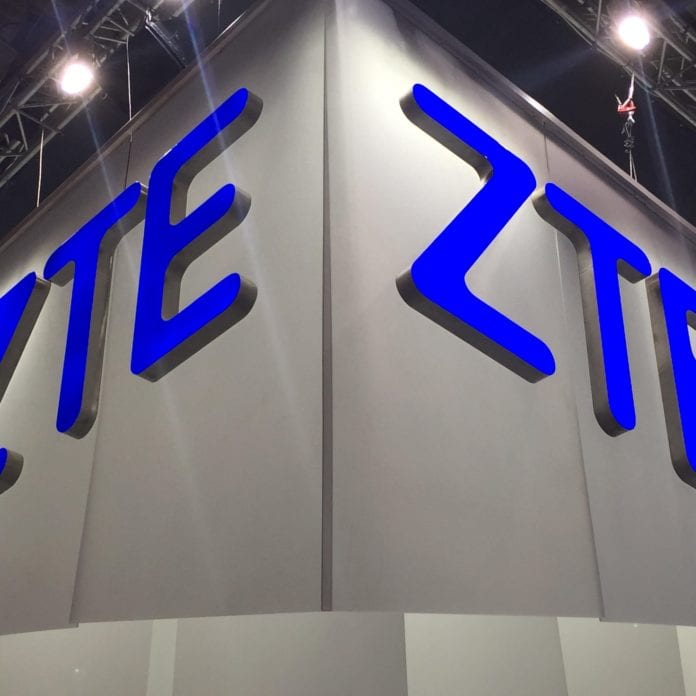Driven by high-definition TV, video interactive services, and also with the emergence of the IoT and 5G era, optical transport networks are stepping from 100G to 400G and 1T, according to Yan Xia, director of ZTE’s New Jersey Lab.
The executive highlighted that using high-order QAM modulation is one of the required means for 400G and 1T transmission, but the optical signal-to-noise ratio (OSNR) requirement of traditional 400G solutions is too high to reach the target set by carriers, especially for the 400G single carrier solution.
“ZTE has been focusing on constellation shaping research and has made significant progress. At the Optical Fiber Communication Conference & Exposition (OFC), which took place in San Diego, ZTE demonstrated a WDM single-carrier 400G solution on a 75 GHz Flexgrid with more than 150% improvement in system reach,” the executive said. “This made 400G modulation more spectral-efficient and more feasible for long haul transmissions, which are both the major concerns to the carriers. We believe these and also efforts from other companies on 400G and 1T will improve the feasibility and eventually boost the deployment of 400G optical network products,” Xia added.
Hung-Chang Chien, technical director of ZTE TX Inc., a U.S.-based research and development subsidiary of ZTE, explained that ZTE’s 100G+ research efforts started in 2011 and can be divided into three phases. Back in 2011, ZTE TX had implemented a 400G/1T superchannel transceiver prototype based on 100G wavelengths with their spectral efficiencies doubled to 4 bits/s/Hz using ZTE’s patented super-Nyquist DSP technology, which later made possible the first-ever ultra-long-haul 400G/1T superchannel field trail in 2012. After that, the company moved on to investigate coherent optics with more than 400G per wavelength, pursuing lower power and cost per bit as well as higher line-side I/Q port density.
“With that, ZTE has achieved several milestones in single-carrier 400G and beyond transmission with modulation efficiencies and symbol rates up to 256 QAM and 128 Gbaud, respectively. Our current research has been focusing on single-carrier 800G and 1T coherent optics, which are both considered potential post-400G rates,” said the technical director.
ZTE also estimates that by 2020, 1T-level optical transmission solution will start commercial trials.
“Working with other advanced technologies such as large-scale optic and electric cross-connection, ZTE could propose customers with an extremely large capacity, better spectrum efficient and also agile, SDN oriented network solutions,” Xia said.
ZTE is also cooperating with OFS and NeoPhotonics in the high-performance transmission technologies field.
“Adhering to openness in industry chain cooperation, ZTE would like to work with any company with high performance transmission technologies. In this cooperation, OFC provides new fiber, NeoPhotonics provides High Baud Coherent Driver Modulator and ZTE integrated them and added the advanced coherent algorithm to implement a high performance optic transmission solution. This showed a good openly industry chain could help companies to achieve a win-win result,” Xia added.
ZTE has built strategic-level relationships with many optic transmission-related ASIC and component companies, especially those who provide unique and high-performance solutions.
So far, ZTE’s WDM networks cover over 600 customers in more than 120 countries. Some of the clients include China Unicom, China Telecom, China Mobile, Cernet, AMX, Ooredoo, Telefonica, MTN, and PCCW, among others. ZTE also plans to deploy over 200 100G/100G+ optical networks this year.
Also, ZTE has deployed more than 400 100G and 100G+ commercial networks and trial networks for high-end operators in Asia-Pacific, Europe, America and Africa, with the total fiber length exceeding 400,000 km.
For example, ZTE exclusively won the 100G+ Optical Transport Network (OTN) project of Telefonica Mexico Movistar (TMM) in Mexico City, Guadalajara and Monterrey. ZTE’s 400G E-OTN solution will build a high-quality network featuring low power consumption, high reliability, large bandwidth, low latency and easy maintenance for TMM to address its transport network construction requirements in the future five to 10 years.
In addition, ZTE has won the bid for three networks in True’s 100G+ backbone wavelength-division multiplexing (WDM) network project in Thailand, gaining around 75% project share. The backbone transmission networks will enable True to provide valuable functions such as ultra-large capacity optical transport network (OTN) cross-connection, intelligent scheduling of optical networks, and ultra-long-distance transmission, helping True adapt to future service development and follow-up evolution.
In terms of 400G optical network application cases, ZTE became the first to successfully complete all the test items in the single-carrier 400G OTN lab test organized by China Mobile Research institute, with all test results reaching preset goals. This is the first centralized test of single-carrier 400G OTN organized by a Chinese operator.

